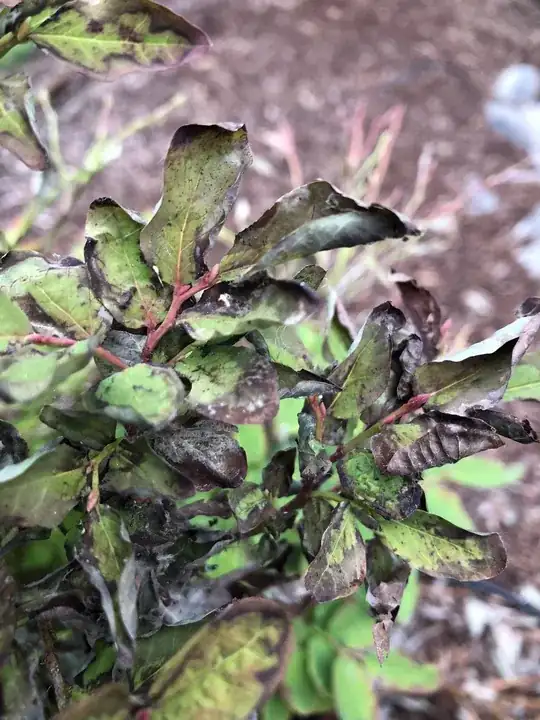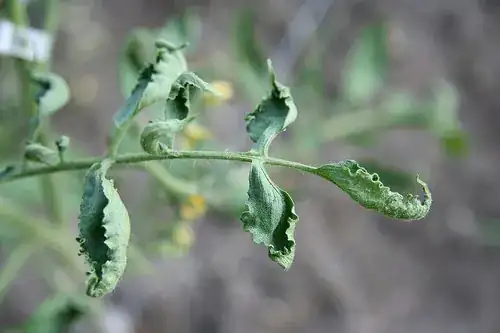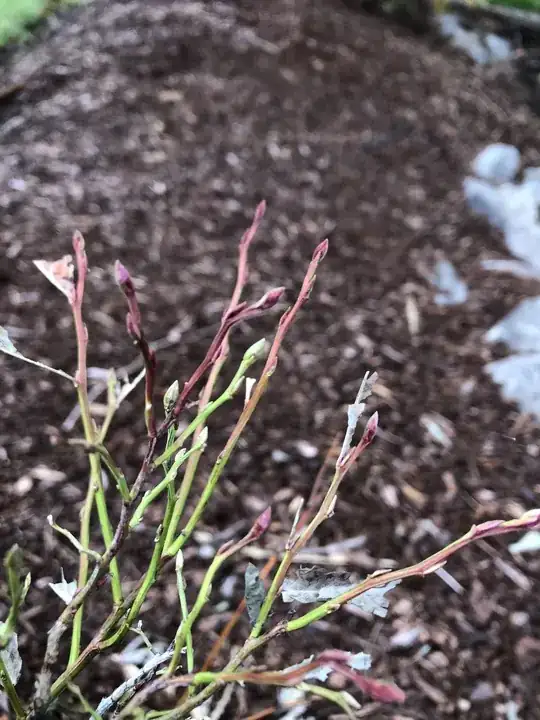I'm in the Willamette Valley in Oregon, USA, (USDA zone 8b) and I have a Vaccinium ovatum, Vaccinium parvifolium, and a Vaccinium membranaceum in a section of my garden. They're shaded up until noon by a row of Leyland Cypress 10 feet to the east and then get full sun after noon. The Vaccinium membranaceum gets a little more sun than the others because of its placement on the hill.
Since the beginning of July, the Vaccinium membranaceum's leaves have been turning red, then black, and then crispy, starting mostly from the edges. This started from the top of the plant on the east side (nearer the shade) and is proceeding to the rest of the plant's leaves.
 Black Crispy Leaves on the Shaded Side
Black Crispy Leaves on the Shaded Side
- I planted the other Vaccinium varieties last year. They're doing fine.
- I planted the V. membranaceum in the early spring this year when it had no foliage. I planted it with chunks of dead wood, compost, and mulch. It grew a lot of healthy bright green foliage up until July.
- The pH of the soil is acidic (blueberries also grow well here).
- The lawn is about 2 feet to the west. I've applied weed and feed and lime to it with a drop spreader.
- All three varieties are on the same drip system and receive roughly the same amount of water. A moisture meter indicates that the soil is moist to wet. The plant experienced heavy prolonged rains in the spring and seemed to do fine with that.
Any ideas what could be causing this?


